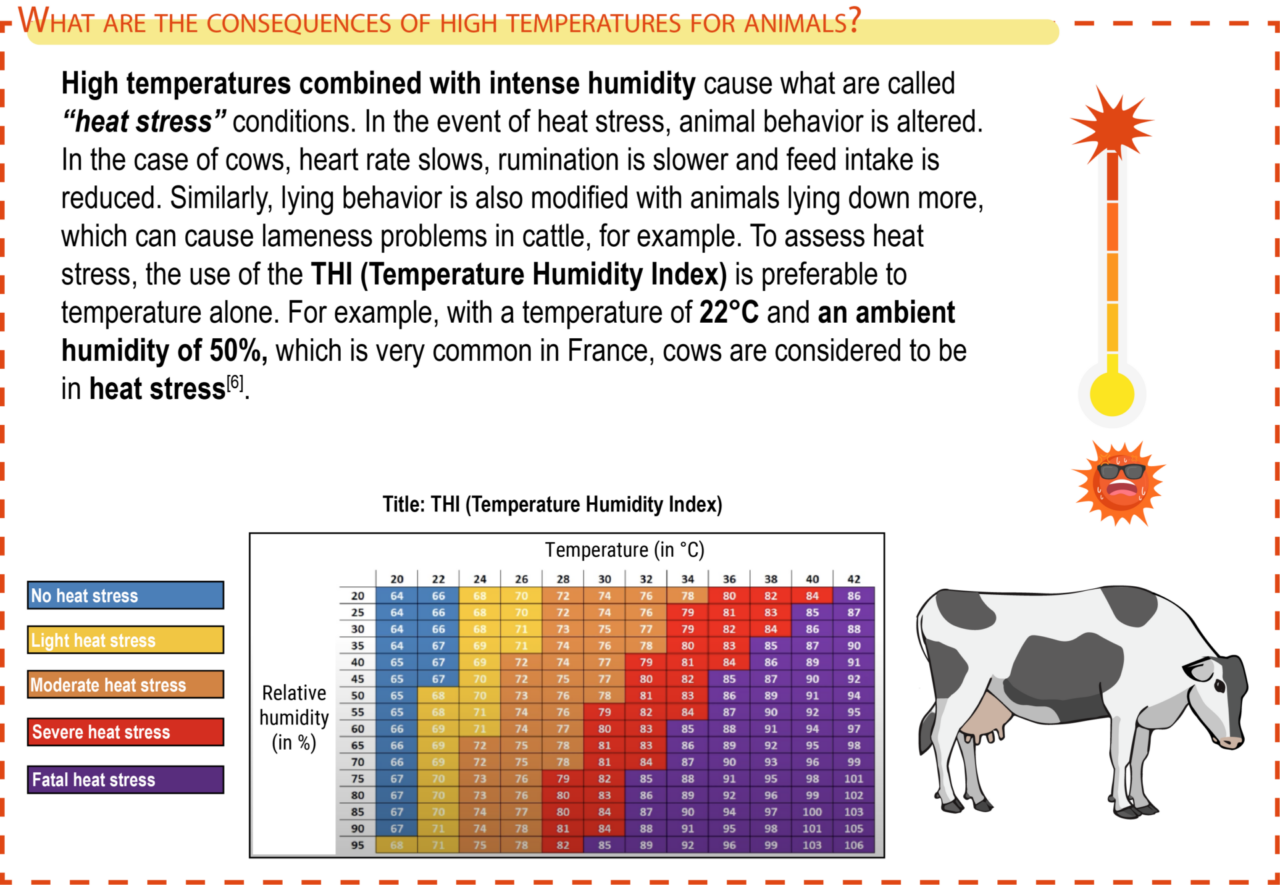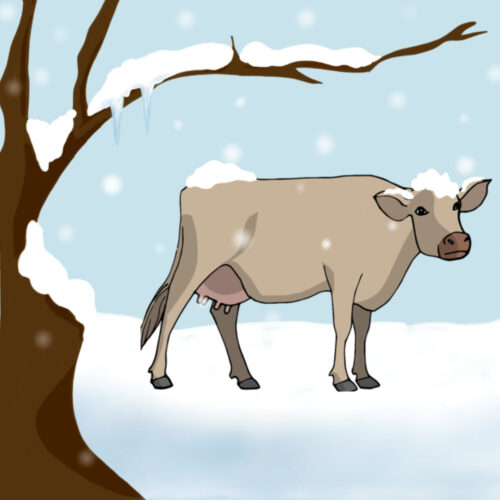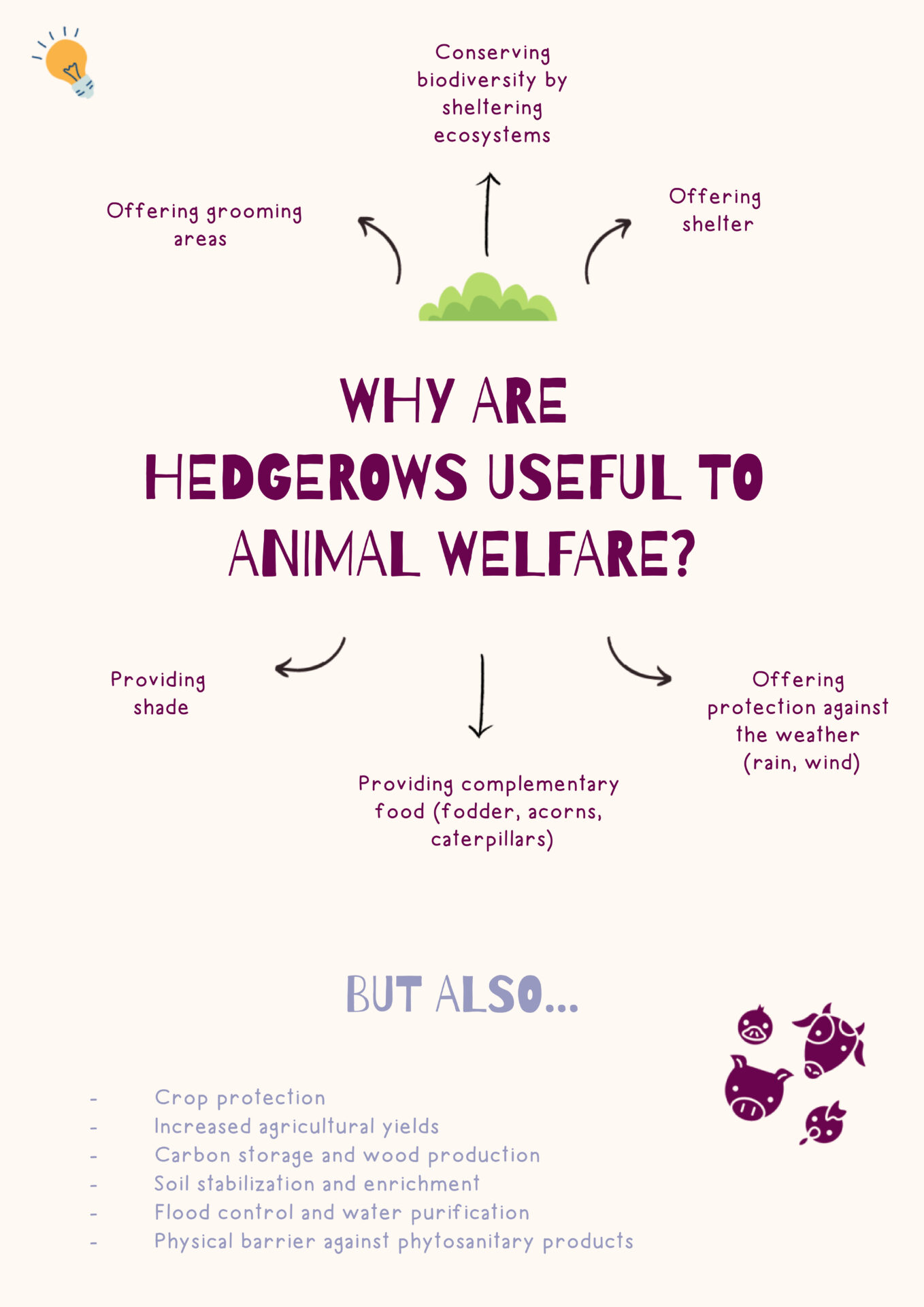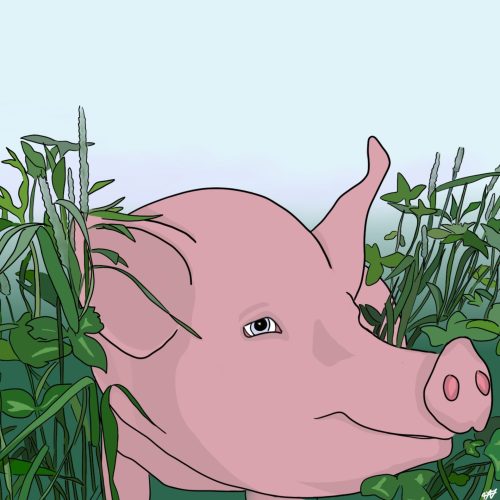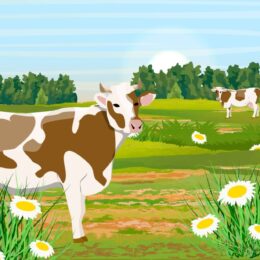

TRUE
Hedgerows are beneficial to animal welfare
Keep in mind
- Hedgerows allow the expression of natural behaviors such as grooming (scratching) for ruminants
- They improve thermal comfort by providing shade during periods of high heat and providing shelter in the event of wind or rain
- They sometimes provide food, to complement grazing
- They allow promoting biodiversity
A hedgerow is a plant fence made of grass, brush, shrubs and even trees used to mark an area, a property or a field. It may have been planted or have grown naturally.
The Inventaire Forestier National (IFN) defines hedgerows as a linear structure managed by man with a maximum width of 10 meters and comprising at least three trees separated by a maximum of 10 meters from each other[1].
A bit of history… and geography
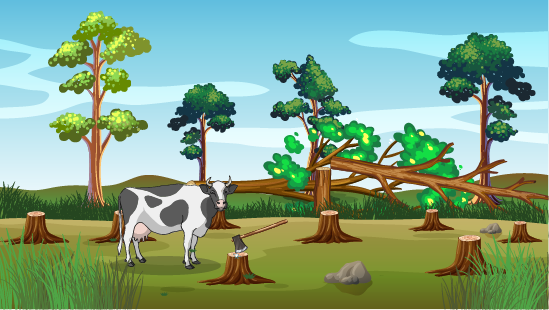
Hedgerows have been part of our landscapes for many years. However, since the beginning of the 20th century, for many reasons, they have become increasingly rare. In fact, since 1950, according to a 2006 study by Solagro, nearly 70% of hedgerows on the French territory have disappeared, ie 1.4 million kilometers[2].
This is explained first of all by rural land development which has led to fewer hedgerows on the territory in order to have less fragmented plots. On the other hand, agricultural modernization and the decline in open-air farming have contributed to the reduction of permanent grasslands and, consequently, to the disappearance of hedgerows. Finally, growing urbanization contributes to the reduction of agricultural land.
However, the scarcity of hedgerows currently seems to be slowing down thanks to growing environmental awareness, including replanting policies. For example, the French government’s objective through its “ Plantons des haies ! ” initiative was to achieve the planting of 7,000 km of hedgerows over the period 2021-2022.
With regard to the distribution of hedgerows in France, it can be pointed out that the western regions such as Normandy, Brittany and the Pays de la Loire have a fairly high density of hedgerows in comparison with other regions such as Hauts-de-France or Nouvelle-Aquitaine. In Brittany, for example, the density of hedgerows can reach almost 110 meters per hectare, whereas in other regions it is only 20 meters per hectare[3].
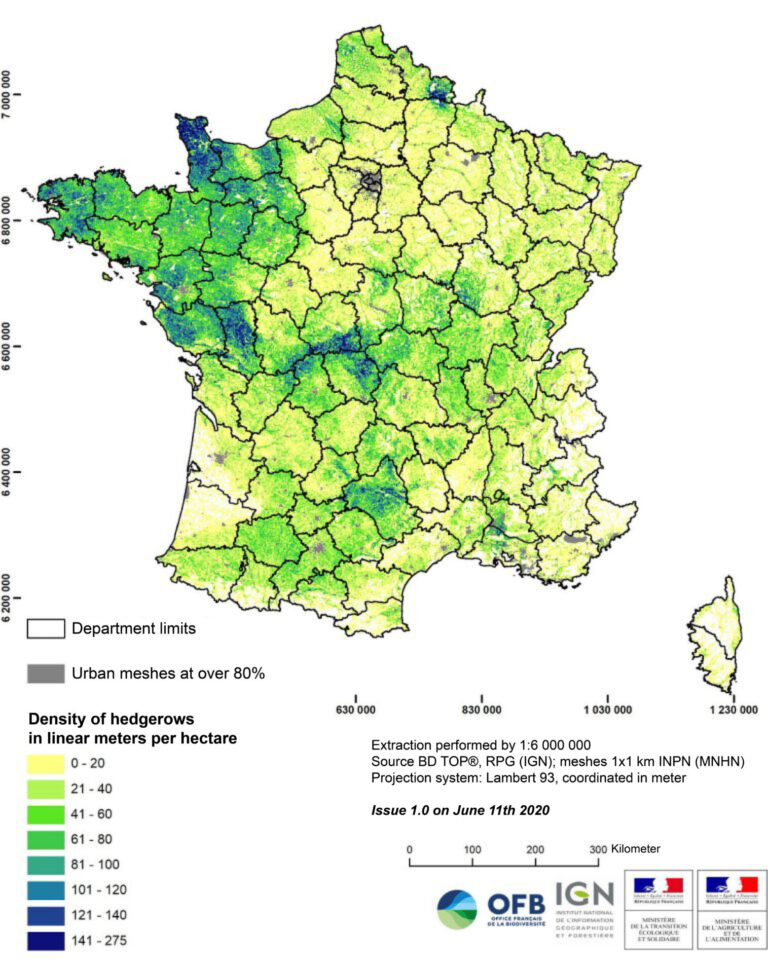
Title: Density map of hedgerows in metropolitan France
Source: OFB (https://www.ofb.gouv.fr/haies-et-bocages-des-reservoirs-de-biodiversite)
Why do hedgerows have a positive impact on animal welfare?
Hedgerows have several beneficial effects on animal welfare:
- They allow the expression of certain natural animal behaviors
- They promote better thermal comfort for the animals, which is essential in view of the climatic prospects

Did you know?
Photovoltaic panels are increasingly installed in sheep meadows in order to provide the same positive effects as hedgerows. This is sometimes referred to as “agrivoltaism”. In this case, energy is produced by the panels and the grass below grows better thanks to the shade. Note that this type of installation requires a minimum height of 1.1 meters to avoid injury and allow the monitoring of animals[4].
One should be careful however, as the installation of photovoltaic panels should not be done to the detriment of agricultural land.
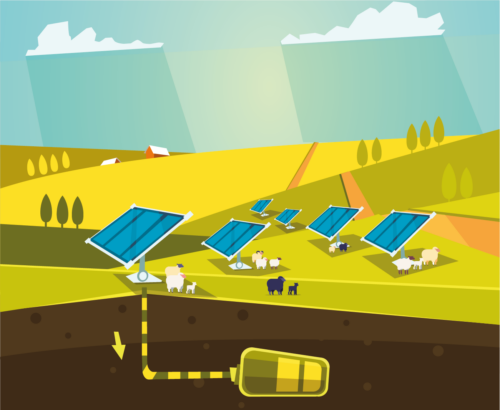
The effect of hedgerows on the thermal comfort of animals
Hedgerows help animals protect themselves from heat, cold, wind and bad weather in general. In a context of climate change, severe droughts and heat waves are expected, as we saw during the summer of 2022, resulting in animals suffering from the heat.
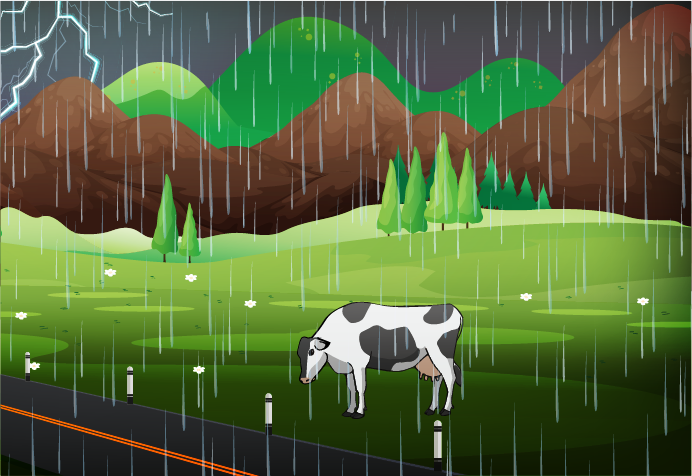
Free-range animals need shade to protect themselves from the heat in summer, using a shelter which can be natural (trees and hedgerows) or artificial. This is even more important since animals do not have the same thermal comfort zone as humans and are often more affected by heat than humans! For example, it has been observed that sows can use shade from trees and hedgerows to regulate their temperature during hot periods[5].
Similarly, in case of extreme weather and strong winds, animals can shelter under hedgerows, which act as windbreaks[7]. This way, wind speed can be reduced by 30 to 50% . Hedgerows can therefore help protect animals from the cold. Animals then use less energy to maintain their body temperature at an acceptable level. The cost of thermoregulation is reduced, which limits the negative impacts of heat stress on animal welfare and productivity.
To learn more about the effects of cold on cattle:
Do you think a cow gets cold outside in winter? We answer!

Did you know?
Thermoregulation refers to the processes by which an animal can maintain its internal temperature within normal limits regardless of the temperature of its surrounding environment. It is based on the constant balance between heat gains and heat losses.
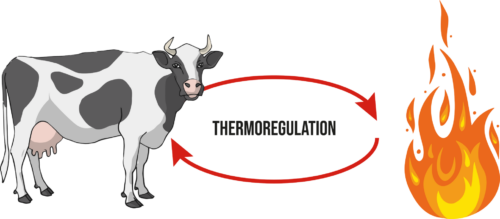

In short!
Hedgerows are real tools that enable animals to adapt and mitigate the negative impacts of climate change on their welfare and health. They are sustainable levers of action that must be fully used for pastures management. They are essential to the vital needs of animals living outdoors, which are the first to suffer from climate change.
Other benefits of hedgerows on animal welfare…
Besides improving thermal comfort, hedgerows have many other advantages for animal welfare.
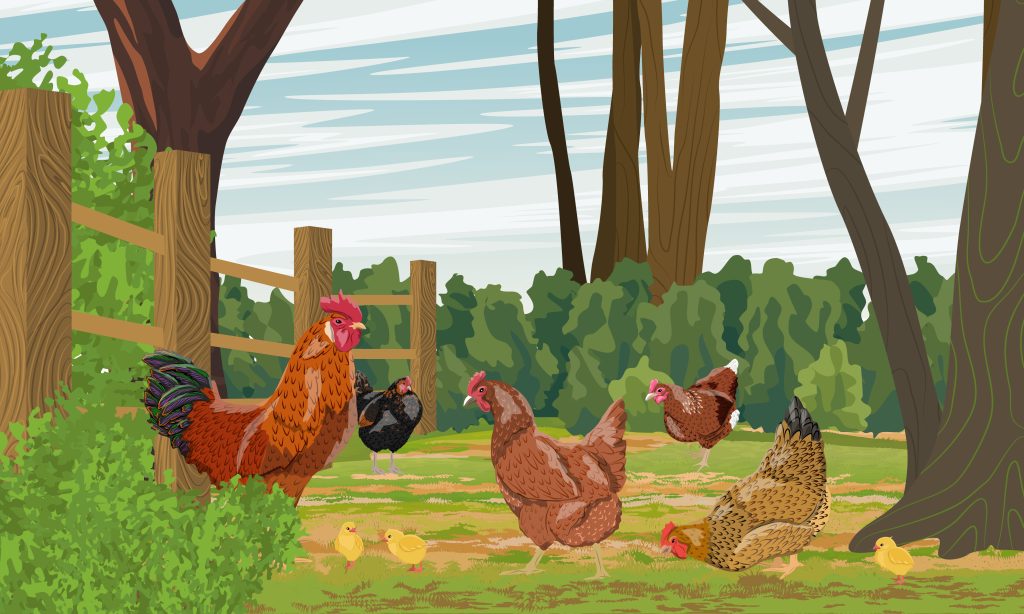
For poultry, trees can be planted in the chicken run. These hedgerows allow poultry to express their natural behavior and improve their comfort. Indeed, according to a study, the risk of feather pecking was reduced 9-fold in groups where more than 20% of individuals had access to outdoor runs[8]. Furthermore, the presence of trees increases poultry exploratory behavior, allowing in turn to make better use of the run. Indeed, they feel safer vis-à-vis predators[9]. The existence of hedgerows and trees in the chicken run therefore appears to be important for the welfare and comfort of poultry.

Did you know?
Some labels require the presence of trees in animal runs. For example, the specifications of the free-range Label Rouge as well as those of the level A Animal Welfare Label require that all broilers enjoy 2 square meters of wooded area. For laying hens, the Label Rouge specifications require a wooded run with 5 square meters per hen.
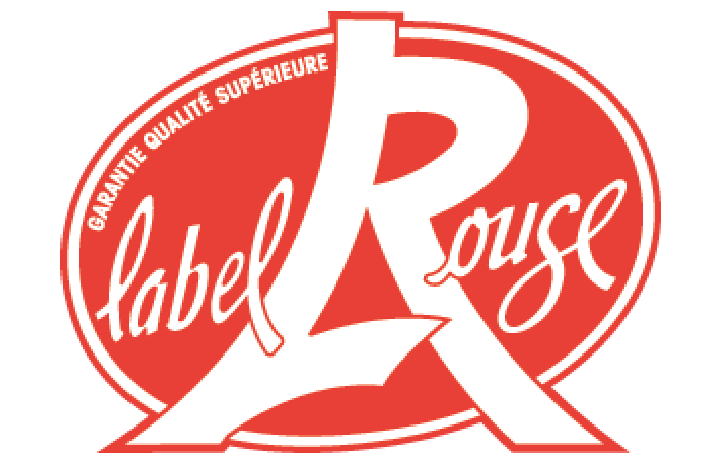
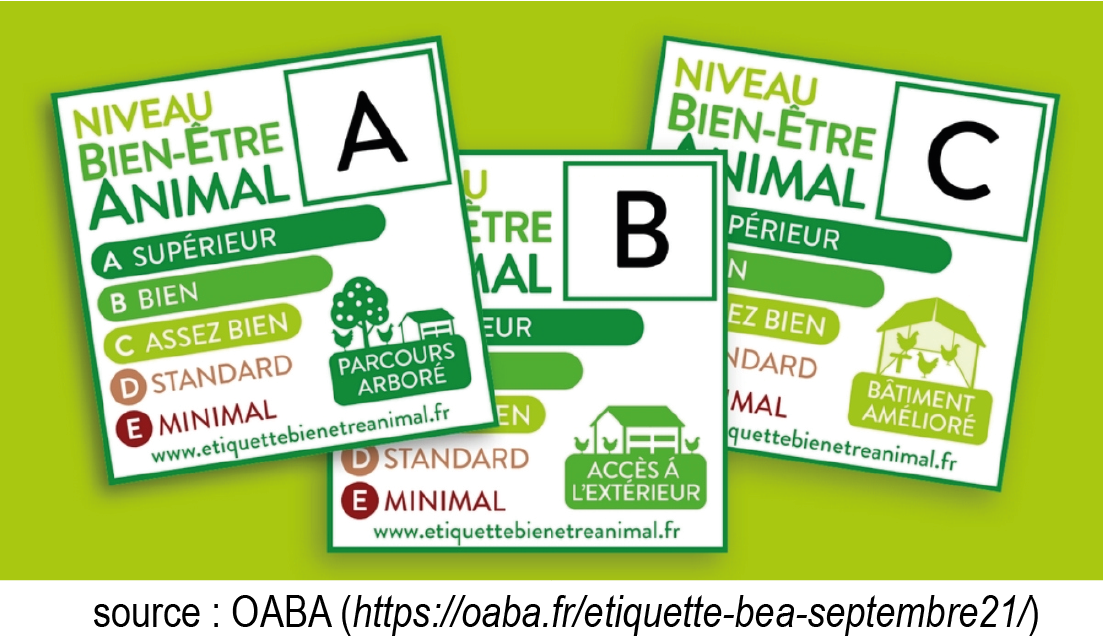
Hedgerows play other roles too: they can serve a nutrient source (supplementary fodder) for animals, especially during periods of drought when grass growth is limited. “When the meadows are dry in summer, the leaves of trees that are still green provide additional food, like those of the white mulberry, which are very rich in protein. Other leaves, such as those of the ash tree, lime tree, alder or willow, have medicinal virtues”, says Yves Étignard , president of the Groupement d’Intérêt Ecologique et Economique (GIEE) Prairies DOR[10].
Hedgerows can also provide food supplements: chestnuts or acorns for pigs, as indicated by breeders[11]. However, note that not all plant species are safe for animals, and some hedgerows can be toxic, so one must remain vigilant.
Cows sometimes even prefer hedgerows to grass, which is abundant in early spring[12].
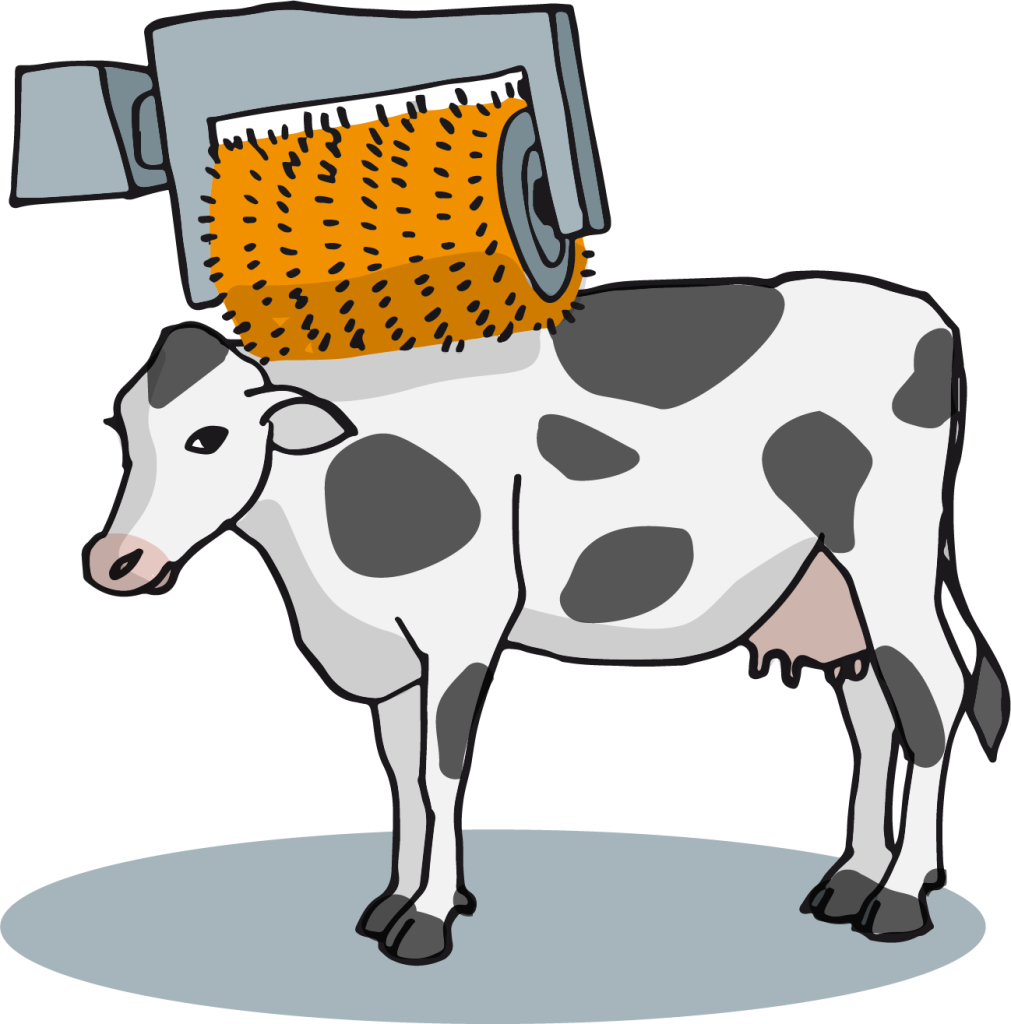
Finally, cattle and even horses can use the hedgerows for scratching, thus providing them with comfort. It should be noted that scratching is a natural behavior essential to the welfare of cattle. It has even been shown that the scratching behavior was better expressed with hedgerows and trees than with a brush[13].
For goats, trees also allow expressing their natural “climbing” behavior. Indeed, goats prefer to lie down and feed on raised surfaces. This behavior is the result of an avoidance strategy vis-à-vis predators and therefore allows them to reduce their stress[14].
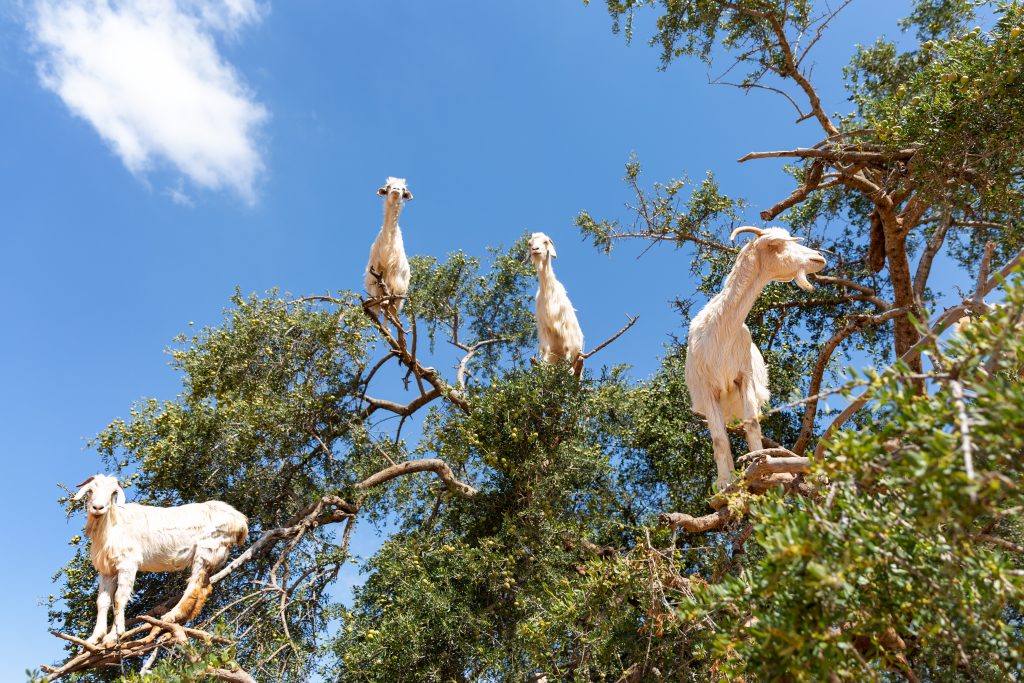
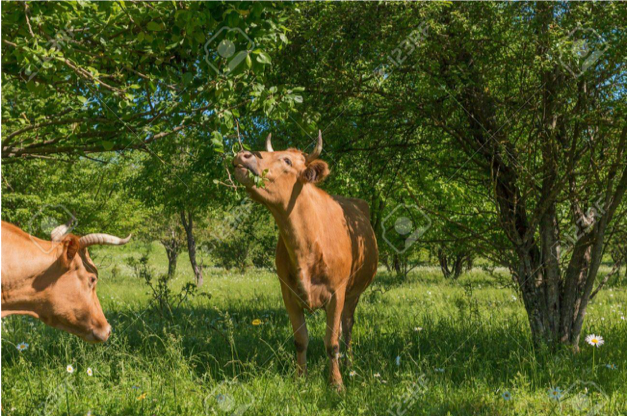
In addition, hedgerows are a living space for other, smaller animals! Indeed, they create a microclimate[15]where birds (eg woodcocks), small mammals (eg wild rabbits) and insects live together, eat or even mate. Hedgerows are genuine ecosystems. Furthermore, they increase soil water-holding capacities (slowing down runoff and promoting infiltration of water). Wind or water soil erosion is thus slowed down.
In the end, hedgerows contribute greatly to animal and human welfare and to environment preservation. Hence, they are perfectly in line with the “One Welfare” sustainable approach, meaning one common “welfare” for people, animals and the environment (To learn more about the concept of One Welfare, you may want to watch this video)

In short!
Hedgerows have many benefits for the welfare of farm animals. They are useful for protection, comfort, stress reduction and improvement of animal nutrition.
In conclusion
For further information…
Hedgerows also act as carbon sinks, increasing the C02 storage capacity of plots. Thanks to the research projects AgForward – Promotion des pratiques agroforestières pour favoriser le développement rural en Europe (EU 2014-2017) et Carbocage – Vers la neutralité Carbone des territoires (Ademe 2016-2019) , INRAE researchers have indeed shown a significant effect of hedgerows on the soil carbon stocks of adjacent plots, up to a distance of 3 meters. From an ecological and climatic point of view, hedgerows are a real asset for the planet.
[1] https://inventaire-forestier.ign.fr/spip.php?article597
[2] Philippe POINTEREAU et Frédéric COULON, « La haie en France et en Europe : évolution ou régression, au travers des politiques agricoles”, 2006. Available on: https://www.actu-environnement.com/media/pdf/news-35258-rnhc.pdf
[3] « Haies et bocages : des réservoirs de biodiversité ». Available on: https://www.ofb.gouv.fr/haies-et-bocages-des-reservoirs-de-biodiversite
[4] inn’ovin, « Produire des ovins sous panneaux photovoltaïques au sol ». Available on: https://www.inn-ovin.fr/produire-des-ovins-sous-panneaux-photovoltaiques-au-sol/
[5] S.-L. A. Schild, L. Rangstrup-Christensen, M. Bonde, et L. J. Pedersen. (2018). The use of a shaded area during farrowing and lactation in sows kept outdoors. Applied Animal Behaviour Science, 209, https://doi.org/10.1016/j.applanim.2018.08.019
[6] Idele, Cniel (centre national interprofessionnel de l’économie laitière), « Impacts du stress thermique sur les vaches laitières », août 2021. Available on: https://idele.fr/umt-ebis/?eID=cmis_download&oID=workspace%3A%2F%2FSpacesStore%2F6e71a361-6b6e-460d-a140-aed81d7c8e89&cHash=50557fae57f74ca602d0212ba1ae25bd
[7] Department of the environment and biodiversity of the Calvados general council, « Les haies bocagères », mars 2010. Available on: https://www.google.com/url?sa=t&rct=j&q=&esrc=s&source=web&cd=&cad=rja&uact=8&ved=2ahUKEwi479L-mvH6AhXNxoUKHXJlBr0QFnoECBAQAQ&url=http%3A%2F%2Fwww.valdarry.fr%2Fmedias%2Ffiles%2Fguide-des-haies.pdf&usg=AOvVaw3F7r52xgMMT9aJvRVT_9iq
[8] C.J. Nicol , C. Pötzsch , K. Lewis & L.E. Green. (2003). Matched concurrent case-control study of risk factors for feather pecking in hens on free-range commercial farms in the UK. British Poultry Science, 44(4),https://doi.org/10.1080/00071660310001616255
[9] A.C. Fanatico, J.A. Mench, G.S. Archer, Y. Liang, V.B. Brewer Gunsaulis, C.M. Owens, A.M. Donoghue. (2016). Effect of outdoor structural enrichments on the performance, use of range area, and behavior of organic meat chickens, Poultry Science, 95(9), https://doi.org/10.3382/ps/pew196.
[10] « Les bienfaits des haies pour les exploitations agricoles ». Available on: http://biodiversite.gouv.fr/actualite/les-bienfaits-des-haies-pour-les-exploitations-agricoles
[11] “De l’arbre et du cochon”. Available on: https://www.viandesetproduitscarnes.fr/index.php/en/144-environnement–elevage/724-de-l-arbre-et-du-cochon
[12]S. Vandermeulen, C. A. Ramírez-Restrepo, C. Marche, V. Decruyenaere, Y. Beckers, and J. Bindelle. (2018). Behaviour and browse species selectivity of heifers grazing in a temperate silvopastoral system. Agroforestry Systems, 92, https://dx.doi.org/10.1007/s10457-016-0041-x
[13] D. Kohari, T. Kosako, M. Fukasawa, et H. Tsukada. (2007). Effect of environmental enrichment by providing trees as rubbing objects in grassland: Grazing cattle need tree-grooming, Animal Science Journal, 78 (4), https://doi.org/10.1111/j.1740-0929.2007.00455.x
[14] G. Zobel, H. W. Neave, et J. Webster. (2019). Understanding natural behavior to improve dairy goat (Capra hircus) management systems, Translational Animal Science, 3(1), https://doi.org/10.1093/tas/txy145
[15] Thomas Vanneste, Sanne Govaert, Fabien Spicher, Jörg Brunet, Sara A.O. Cousins, Guillaume Decocq, Martin Diekmann, Bente J. Graae, Per-Ola Hedwall, Rozália E. Kapás, Jonathan Lenoir, Jaan Liira, Sigrid Lindmo, Kathrin Litza, Tobias Naaf, Anna Orczewska, Jan Plue, Monika Wulf, Kris Verheyen, Pieter De Frenne. (2020). Contrasting microclimates among hedgerows and woodlands across temperate Europe. Agricultural and Forest Meteorology, 281, https://doi.org/10.1016/j.agrformet.2019.107818
keep in mind
- Hedgerows allow the expression of natural behaviors such as grooming (scratching) for ruminants
- They improve thermal comfort by providing shade during periods of high heat and providing shelter in the event of wind or rain
- They sometimes provide food, to complement grazing
- They allow promoting biodiversity
KEY FIGURE
of hedgerows in France have disappeared since 1950.

